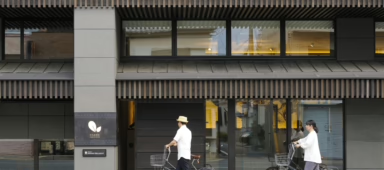Lunar New Year’s Eve dinner is the most lavish meal of the year for the Chinese
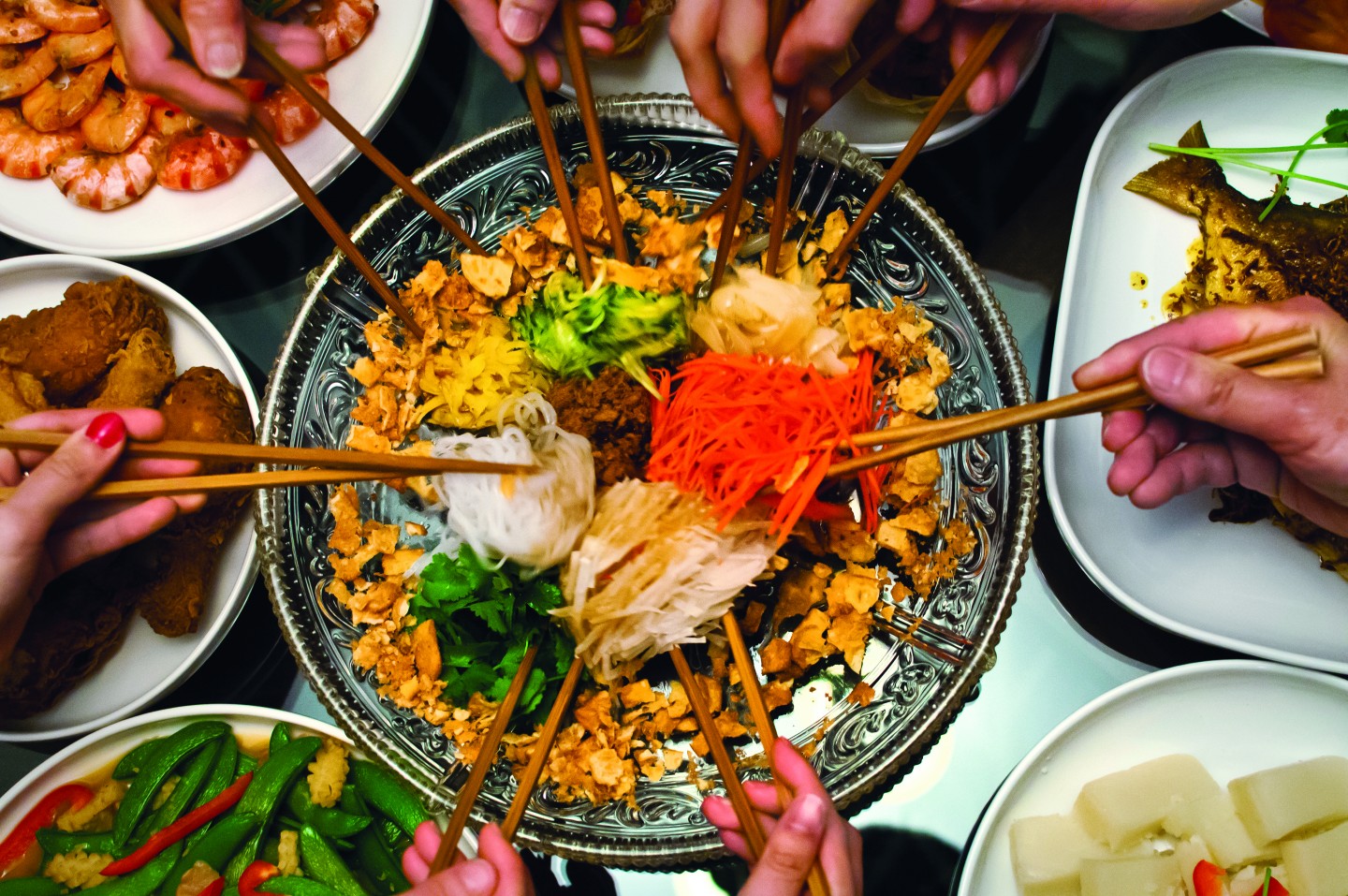
The Lunar New Year, the most important festival of the Chinese calendar, will be celebrated this year on 8 February. Traditionally, it’s the time when scattered families reunite to pay their respects to ancestors, to pray for prosperity in the coming year, and, of course, to feast.
The festivities begin as the old year wanes, with ceremonial offerings to the Kitchen God, who is bribed with sweetmeats to report kindly on the family’s behaviour to the Jade Emperor in Heaven. In the last days of the year, auspicious phrases are painted on strips of red paper and pasted around every doorway, along with pictures of protective deities.
In more traditional villages, people take care to feed their gods and ancestors before they themselves eat on New Year’s Eve. They might take dishes of food to family graves, where they offer libations of wine and burn incense, firecrackers and paper money. At home, they make offerings to local gods, laying out pig’s heads, smoked fish, tofu, rice wine and tea on makeshift altars, and lighting firecrackers.
Although many city-dwellers now prefer to share their New Year’s Eve dinner in a restaurant, in the countryside it’s always a home-cooked affair. Many rural households in China still fatten a pig for the festival, slaughtering it in the last lunar month and brining or smoking the meat. Aside from pork, a home-reared chicken is likely to be part of the feast. Most importantly, there has to be more food on the table than everyone can possibly eat.
The following are a few of the most notable dishes to have during Lunar New Year:
A whole fish
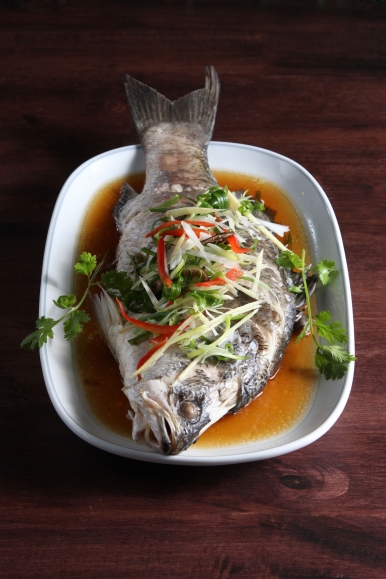
One of the most essential dishes for the New Year’s Eve feast is a whole fish, because the phrase “a fish every year” (nian nian you yu) sounds the same as “plenty every year”, making the dish an edible pun that augurs well for the year ahead. The fish may be steamed, red-braised or fried; what matters is not the cooking method but that it is served complete, from head to tail.
Jiaozi
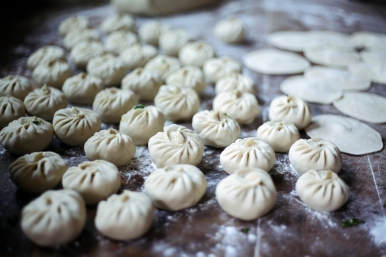
In northern China, where wheat is the staple food, boiled jiaozi dumplings are the archetypal New Year’s food, made by hand on New Year’s Eve and eaten after midnight, when an electrifying storm of firecrackers has been lit to mark the end of the old year and the coming of the new. Circles of plain wheaten dough are pinched around a stuffing – usually minced pork with chopped cabbage or another seasonal vegetable – to make plump crescents that are simply boiled and then eaten with a dip of soy sauce, vinegar and chilli oil. The dumplings may be shaped like old-fashioned gold and silver ingots to invite wealth in the coming year. Sometimes a coin will be hidden in the stuffing to bring luck to whoever finds it in their bowl.
Dried oysters with hair moss
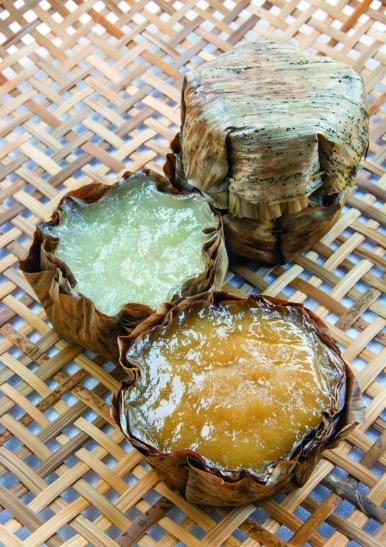
The Cantonese, more than anyone, adore punning dishes, and their restaurants often conjure up seasonal set menus of auspicious New Year’s dishes. One of the most typical is a slow-cooked stew of dried oysters with a dark, threadlike vegetable known in English as hair moss. The Cantonese name for this dish, ho see fat choy, sounds the same as “doing good business and making lots of money”.
New Year’s cake
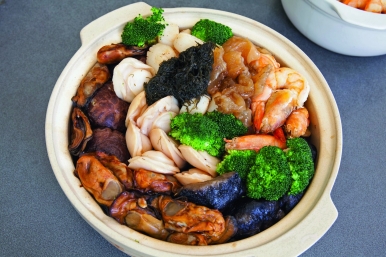
New Year’s cake is found in different forms in different regions of China. In Shanghai and Ningbo, it is made by pummelling cooked rice to a springy paste that can be shaped into rounded blocks and then sliced before cooking with sweet or savoury ingredients (most people make sure to slice their rice cake on New Year’s Eve because using any kind of knife or scissors on New Year’s Day is regarded as unlucky). In the past, the rice paste was often moulded into the shapes of gold and silver ingots or auspicious ruyi sceptres and piled high on ceremonial platters for the festival. In the Cantonese South, New Year’s cake is made from sticky rice sweetened with brown sugar, cut into slices and fried until sizzling and fragrant. What all the regional varieties have in common is their name, nian gao, which means both “sticky cake” and “rising higher every year”.
Tangerines and other fruit
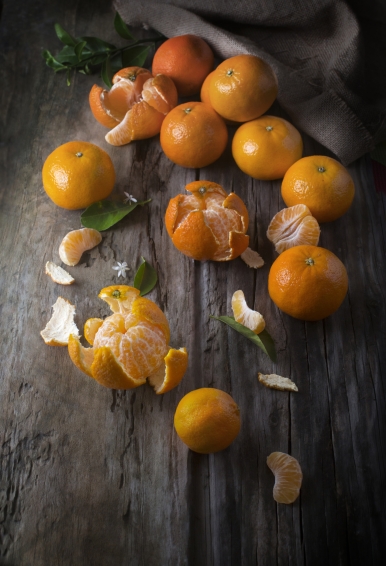
In southern China, tangerines and kumquats (jin ju or golden tangerines) are eaten for their golden colour, which invites riches for the coming year. One of the Chinese characters for tangerine also includes the character for good luck, while the word for orange (cheng) is a homonym for “success”. Another auspicious fruit is the pomelo (you zi), the name of which sounds the same as “to have”, another favourable omen for a prosperous year. All these fruits, bright and plentiful, can be piled high as decorations before they are eaten.
Sweetmeats and snacks
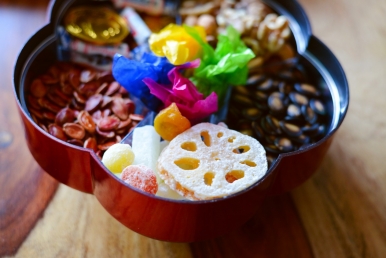
The New Year’s Eve feast is usually a close family occasion but the days that follow are spent visiting relatives and friends to wish them happiness and prosperity in the new year. Married women often return to their old family home, and neighbours drop in to visit each other with gifts and good wishes. Sometimes guests will be offered nibbles from a lacquered box with compartments containing dried and candied fruits, nuts and seeds. Some of these have their own auspicious meanings; for instance, candied lotus seeds are a traditional symbol of fertility.
Tang Yuan
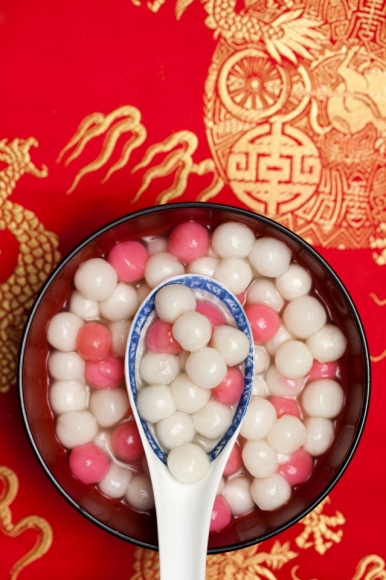
The Lantern Festival on the 15th of the first lunar month marks the end of the New Year’s holiday. Across China, people like to mark the feast by eating round, squidgy glutinous rice-balls, which are often filled with a rich, sweet black sesame paste. The roundness of the rice-balls symbolises fullness and family unity, and their name, tang yuan, is regarded as lucky because it sounds like “reunion” (tuan yuan).




